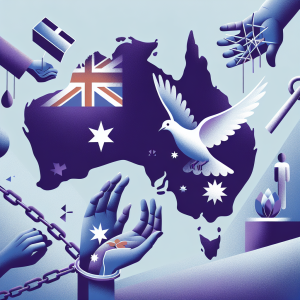Breaking the Cycle: Addressing the Long-lasting Impact of Domestic Violence on Women
Introduction:
Domestic violence is a pervasive and complex issue that affects countless individuals, especially women, across the globe. The impact of domestic violence on women can be long-lasting and devastating, affecting various aspects of their physical, mental, and emotional well-being. In this article, we will delve into the consequences of domestic violence on women and explore the ways to break this vicious cycle. We will also address some frequently asked questions about domestic violence.
I. The Long-lasting Impact of Domestic Violence on Women:
1. Physical Consequences:
– Physical injuries: Women who experience domestic violence often sustain severe physical injuries, including bruises, fractures, burns, and head trauma.
– Chronic health issues: Victims of domestic violence may suffer from chronic health problems such as chronic pain, migraines, gastrointestinal disorders, and cardiovascular diseases due to the stress and trauma they endure.
– Reproductive health problems: Domestic violence can negatively impact a woman’s reproductive health, leading to complications such as infertility, miscarriages, and sexually transmitted infections.
2. Psychological Consequences:
– Post-Traumatic Stress Disorder (PTSD): Survivors of domestic violence frequently develop PTSD, experiencing intrusive memories, nightmares, and heightened anxiety.
– Depression and anxiety: Women who have endured domestic violence are at a higher risk of developing depression and anxiety disorders.
– Low self-esteem: Constant belittlement and emotional abuse can erode a woman’s self-worth and self-confidence.
– Suicidal ideation: Domestic violence can drive victims to contemplate or attempt suicide due to the overwhelming emotional distress they face.
3. Social and Economic Consequences:
– Isolation and estrangement: Domestic violence often forces women to isolate themselves from family, friends, and social networks, leaving them emotionally and socially disconnected.
– Financial dependence: Many victims become financially dependent on their abusers, making it difficult for them to leave the relationship and escape the cycle of violence.
– Unemployment and poverty: The impact of domestic violence can lead to job loss, hindering women’s financial stability and trapping them in poverty.
II. Breaking the Cycle:
1. Raising Awareness:
– Education: Creating awareness about domestic violence through educational programs can help individuals recognize the signs and understand the consequences, encouraging early intervention and prevention.
– Public campaigns: Media campaigns and social initiatives can highlight the issue, challenge societal norms that fuel domestic violence, and promote gender equality.
2. Strengthening Legal Protection:
– Enforcing laws: Governments and legal systems need to ensure that existing laws protecting victims of domestic violence are enforced effectively.
– Legislation improvements: Continual assessment and improvement of laws to strengthen protection for victims and hold perpetrators accountable.
3. Providing Support and Resources:
– Shelters and Support Groups: Accessible shelters and support groups offer a safe environment for survivors, providing emotional support, counseling, legal aid, and job training.
– Helplines and Hotlines: Establishing helplines and hotlines can provide immediate assistance and support for victims fleeing abusive situations.
III. Frequently Asked Questions (FAQs):
Q1: What are the warning signs of an abusive relationship?
– Obsessive possessiveness, jealousy, and controlling behavior.
– Physical violence, even if infrequent.
– Verbal abuse and constant demeaning.
– Isolation from family and friends.
– Intimidation and threats.
Q2: How can I help a friend or family member who is experiencing domestic violence?
– Listen without judgment and offer support.
– Encourage them to seek professional help, such as counseling or joining support groups.
– Provide information about available resources and helplines.
Q3: Why do some women stay in abusive relationships?
– Fear for their own safety or the safety of loved ones.
– Economic dependence on the abuser.
– Limited access to resources or support.
– Emotional attachment and a sense of hope for change.
Q4: What are some long-term effects of domestic violence on children?
– Post-Traumatic Stress Disorder (PTSD).
– Behavioral problems and difficulties in school.
– Increased likelihood of becoming either perpetrators or victims of domestic violence in adulthood.
Q5: Is there any hope for rehabilitative programs for abusers?
– Yes, rehabilitative programs that address the root causes of abusive behavior can be effective in breaking the cycle of violence. These programs aim to help perpetrators acknowledge their actions and develop healthier coping mechanisms.
Conclusion:
Breaking the cycle of domestic violence is crucial to empower women and create a safer society. The long-lasting impact of domestic violence on women affects not only their physical and mental health but also their social and economic well-being. By raising awareness, strengthening legal protection, and providing support and resources, we can work towards breaking this cycle and ensuring a safer, more equitable future for all.




















